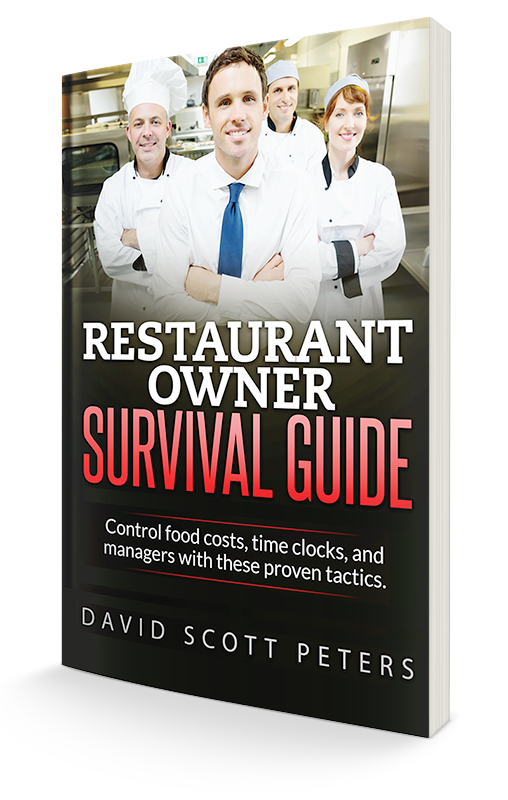Back of house advice: Don’t let food waste eat your revenues
Food cost can be the 600-pound gorilla sitting in the corner of your operation, demanding constant attention. After you’ve priced your menu effectively, checked the standardized recipes, worked your vendors for the best price and looked closely at your sales mix, there are still a lot of variables that need to be examined, primarily — food waste. Are you and your managers aware of the amount of wasted food product or how it’s created? This month, let’s take a look at some key areas where waste begins and I’ll share some solutions to address the issue quickly and perhaps regain some lost revenue.
I suggest using an approach similar to HACCP, hopefully, we are all aware of the basic tenets of HACCP. Hazard Analysis Critical Control Point, which was developed by Nestle for NASA, it breaks down the flow of food through your operation from the back door to the table and analyzes each point or step. But, instead of just looking at critical points of food safety, I use the same concept to look at each point for waste. I call it Waste Analysis Critical Control Point (WACCP).
Who signed for this?
Check every box of each delivery to make sure of the proper amount and quality. The raw products used to create revenue arrive at your back door. If the loading dock or receiving person is busy or overloaded, it is possible products are signed for incorrectly, resulting in short weights, incorrect invoice prices and sub-par quality, automatically reducing profits. If the people who regularly sign in deliveries accept poor or mediocre product, that’s what your purveyors will continue to send.
Also, remember shelf life makes a big difference in the yield per case, and yield connects directly to your food cost. Be sure to buy the right products and store them properly.
Watch that dial
Monitor all coolers daily and set up a preventive maintenance program. The shelf life of perishable food comes into play not only on the receiving end, but also in the kitchen and bar refrigerators. Daily cooler temperature checks and an effective preventive maintenance program will lead to positive bottom line results.
Fines from health code violations will also nibble away at revenue if your cooler isn’t holding products below the required 40 degrees. Moldy food can spread food-borne bacteria around to other items via the fans, so it’s important to keep refrigeration cold and clean. To help keep cold air inside, purchase heavy-duty plastic curtains for the walk-ins, even if they do knock the cook’s hats off!
Where’s the beef?
Train the kitchen staff to know what yield to expect from each food shipment. In my experience, most food waste issues come from the prep and cooking stage of the operation. An untrained kitchen staff can rob you of profits by building a higher cost for each menu item. Putting eight shrimp instead of six on a popular pasta dish, cutting steaks and fish too heavy, trimming too much fat and cutting vegetables the wrong size can have wasteful results.
Work to create standard recipes and follow them. Managers should perform spot checks, not only in the prep area, but on the line as well. Invest in a vacuum packer — a valuable piece of equipment. At least two to three points of food cost can be saved by using the vacuum packer for high-end items. And, in some operations, you may be able to cut meat once a week, streamlining production and labor cost.
That’s medium rare?
Educate the staff about the real cost of mistakes. Line cooks mess up, so do poorly trained service staff. Mistakes in ordering and overcooking cause the food cost to rise and revenue to shrink. How many orders are voided each meal period? How often does the kitchen have to re-fire an order because the server didn’t listen to the guest?
Train the front and back of house staffs to think in terms of revenue, not cost, then track the amount of wasted food in this way to measure performance. Show them that not only is the cost lost when an overcooked steak is re-done, but also the money that would have been made. Cooks and servers already compete over covers each night; why not add waste reduction dollars to the challenge?
Push the salmon
Reevaluate your sales mix for items that end up regularly wasted. In the end, sales drive food cost. Menu mix plays a role in the management of your food waste. Menu items that don’t sell or are not cross-utilized end up in the trash or fed to employees. Change menu items or prices to create a more even sales line to the menu. Cross-utilization is a vital step to controlling inventory and curbing waste.
In the always challenging arena of controlling food cost, following your inventory from the back door to the guest is essential. Design a program for your operation using my WACCP. Use it to create and maintain standards to keep your profits from wasting away.
Willis Getchell is a Certified Executive Chef with experience running his own restaurant and managing corporate and resort settings. He is a recognized leader in his profession, receiving numerous honors, including theThe International Culinary School at the Art Institute of Phoenix’s 2006 Award of Excellence and the Valley of the Sun Chef’s Association Chef-of-the-Year award.




